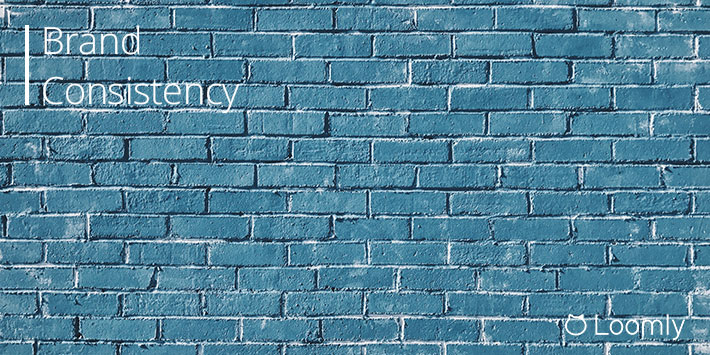Your brand is a promise.
It is a promise you need to make — and keep — to your customers every time they see you. Why?
Because, to become a trustworthy brand in today’s digital age, you need to be the brand that has a message that is clear in your customer’s mind.
And there is only one way to become that brand:
Brand consistency.
Brand consistency is a critical component of brand success. But, what makes it so important, and why does it build trust?
Well, in this article, we are going to show you what brand consistency is, why it is important and how to implement it with your team.

Manage all your social media accounts in one place.
Craft, schedule, & auto-post content to all your social channels, then track analytics and manage interactions from a single, easy-to-use dashboard.
What Is Brand Consistency (And Why Is It Important)?
Brand consistency is the continuous delivery of your brand message across all of your touchpoints.
It is the repeated reinforcement of:
- Who you are
- What you do
More importantly, it is ensuring your core message and quality remain the same.
If you go to an Apple store anywhere in the world you know exactly what to expect.
The:
- Prices
- Products
- Furniture
- Displays
- Uniforms
- Music
Are the same the world over; the only variables likely to change are the languages spoken and whether new products are available in that region.
Here are three stores on different sides of the world:

Apple Store Santa Monica, CA, USA — Credit: Apple.com

Apple Store Trafford Center, Manchester, UK — Credit: Apple.com

Apple Store Shinkuku, Japan — Credit: Apple.com
According to research from The Drum, brand consistency is the most crucial factor for consumers when choosing a brand to buy from. Why?
Because consistency helps to set expectations and build trust; being the brand that shows up and always delivers on its promises makes for a natural choice.
After all, people who go abroad and choose McDonald’s over an overwhelming number of local restaurants are usually looking for a safe bet they can count on (and potentially a US passport in Austria — true story).
How you deliver this consistent message can also impact a customer on a personal level, and help tell a more significant story about your brand.
If their experience is consistently positive — or, indeed, negative — it will become a part of your brand by way of interpretation.
This makes brand consistency important for any business looking to achieve success, and connection, with their audience.
Let’s face it:
It takes a lot of time and effort to convince someone to buy from you; gone are the days of Mad Men who could put a slogan on a billboard to shift products.
Instead, you need to consistently show up and tell the story your audience wants (and needs) to hear to make an impact.
That being said, let’s take a look at a real-world example.
Brand Consistency In Action: What It Is Like To Shop At Nike
Let’s say you are in the market for running shoes.
You find a Nike store near you. You go in, pick out a pair that looks fast and ask if they have them in your size.

They hand you an orange box. You pull out the shoes, slip them on, and…bummer, too small.
You ask for a half size up, but they do not have it. So, the assistant checks their system and calls the store across town to reserve the shoes so you can go there and try them on.
You leave the store and grab a coffee to take in the car. While you wait, you scroll through Instagram and see the Nike Run Club feed.
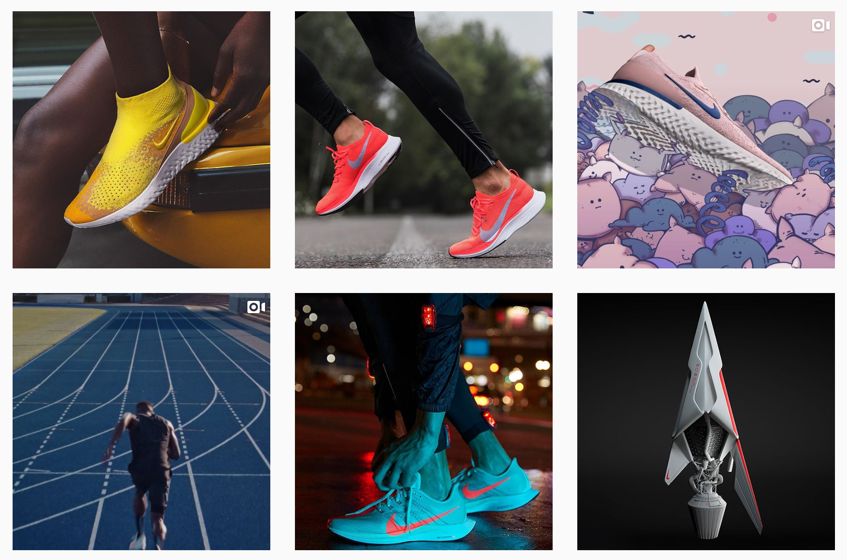
Their entire feed looks like everything you just saw in the shop; the messaging, the posters, and even the shoes on display.
Before you commit to driving across town, you visit their website to triple-check these shoes are definitely for you and if they are cheaper online.
The website carries on the story of their Instagram feed, and the images look consistent with what you have seen on the feed:
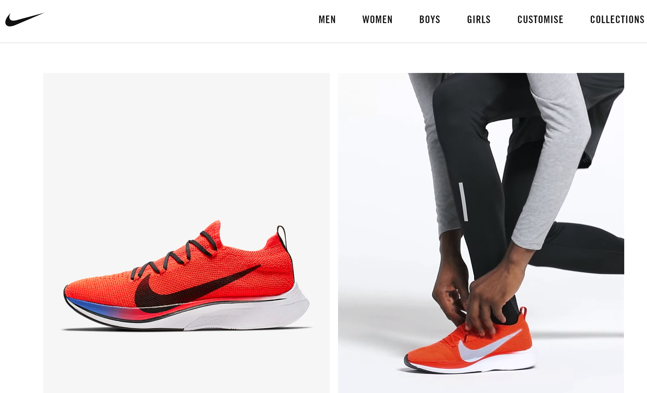
The product description talks about the shoes in the same way the assistant did, and they are the same price, and you are convinced. So, you may as well go to the store and get them today.
You drive across town and go to the store. It is a little bigger, but it looks and feels the same as the store you just left:

You speak to the assistant who hands you another orange box containing the shoe in your size. Perfect fit.
You go to the register, buy the shoes and leave a happy customer.
Okay, this may seem like an ideal situation. But there are levels of consistency here that every brand can learn from.
At each point, the:
- Brand message
- Visuals
- Customer service
- Product displays
- Prices
Are all consistent with each other. There are no pieces of this brand consistency puzzle that do not fit together in some way.
And how all of these pieces fit together has a real psychological impact.
The Psychological Effects Of Brand Consistency
There is a principle in advertising called the “Rule of Seven”.
It says an ad must be seen seven times or more before a customer even thinks about buying. And, the same principle applies to a brand message.
Research from the Online Marketing Insitute shows it can take seven to 13 interactions with a customer before they can be considered a lead.
More importantly, these interactions need to be consistent with each other. That means that elements such as:
- Brand message
- Copywriting voice
- Visual assets
All need to fit together to create a memorable and trustworthy brand experience.
This is why processes such as cross-channel marketing have become so important. So that customers can have the same experience no matter their device or platform.
The more consistent your message, and your appearances in their life, the closer you are going to bring them to deciding whether or to become a customer.
It is helpful to think of these interactions as little nudges down the brand awareness funnel. Each one taking them a tiny bit closer to taking action:
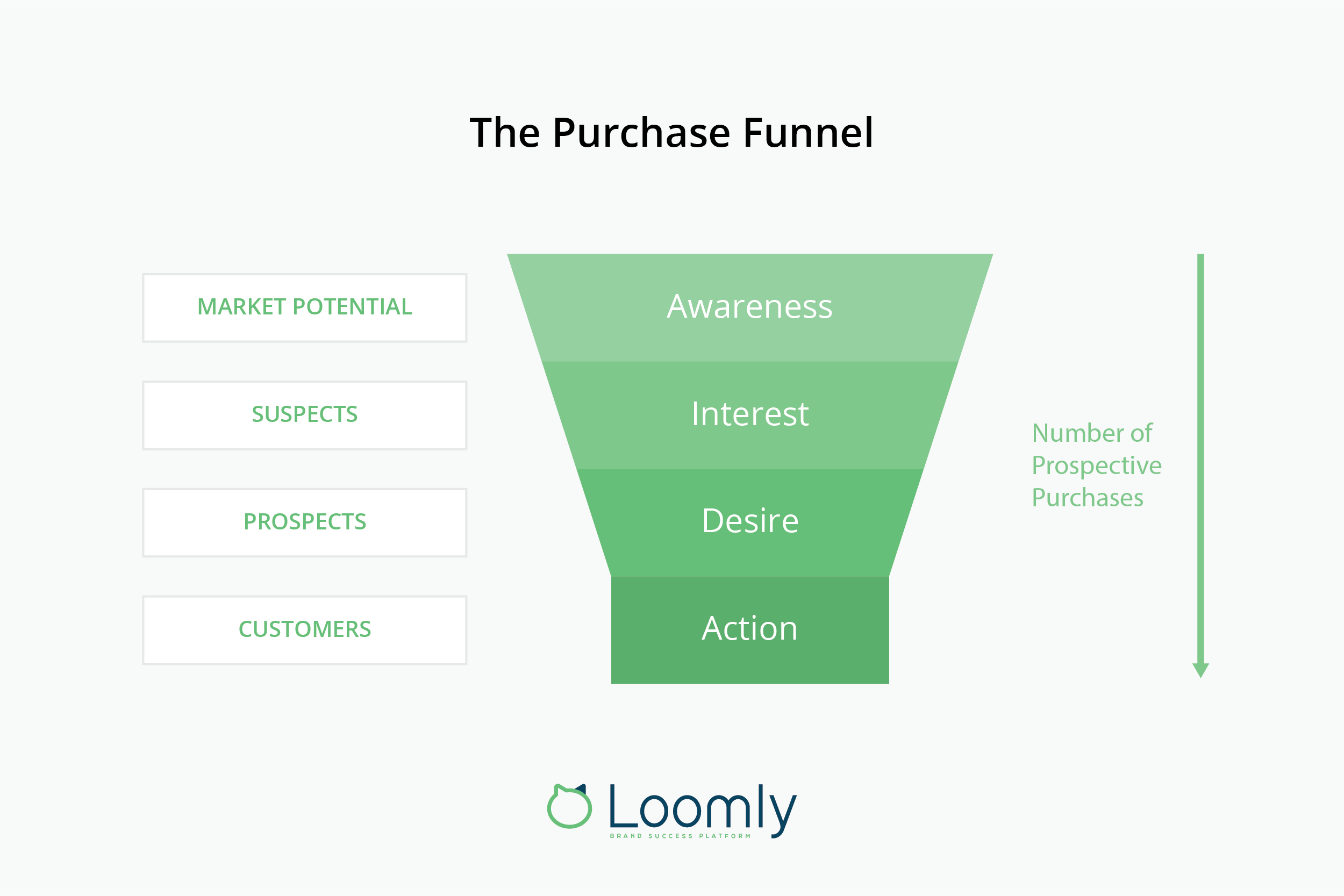
Movement from awareness to action is slow and takes time: brand consistency helps you accelerate the process.
Let’s show you what we mean.
The 3-Month Shoe Buying Process
Greats is a footwear brand from Brooklyn.
James, from the Loomly Team, first heard about them from listening to a podcast they sponsored:

- He heard their elevator pitch on the show about eight times before looking them up on Instagram. That was about three week’s worth of episodes.
- James then followed them on Instagram and saw their updates for another couple of months. He also started to see ads for related brands.
- James occasionally liked their posts – especially the ones around shoes made from renewable resources – and interacted with a few of them.
- Finally — after three months — James was finally in the market for a pair of sneakers. The first brand he looked at, and eventually bought from? Greats.
As James moved from platform to platform with Greats there was a high level of consistency. From the brand messaging through to the imagery used:
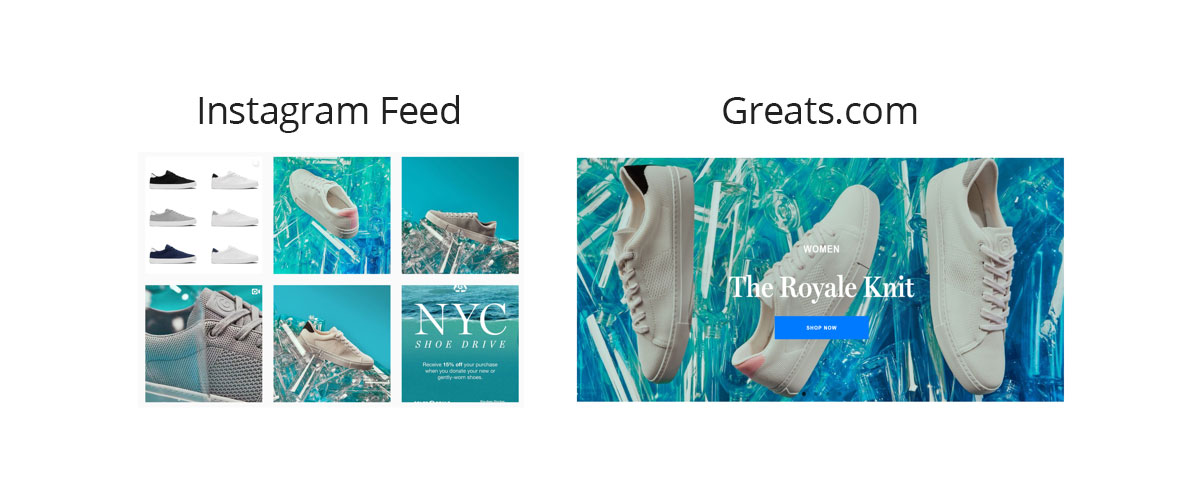
This made the brand easy to recall and build trust. Even just seeing the occasional post and advert that looked and felt a certain way built a high-level of dependability.
Now, studies have shown that brand exposure can subconsciously influence buying habits just by being seen. But having a consistent (and relevant) message to share can supercharge that.
This is because it helps guide people’s decision making and the opinions they form about your brand.
That is why many people think:
- Volvos are safe
- Ferraris are fast
- Toyotas are economical
If you hear and experience it enough times, it starts to become true.
In the next section, we are going to look at how you cultivate brand consistency and use it to gain a competitive advantage.
How To Create A Consistent Brand In 4 Steps
Step #1: Create A Brand Guideline
The first step is to create a document that contains all of the information you need to put out a unified and consistent brand message: your brand guidelines.
Your brand guidelines should contain all of the information about your:
- Brand message
- Brand identity
- Brand voice
- Brand values
- Color palettes
That all of your different teams and departments can draw from to cultivate brand consistency at their relevant touchpoints.
These brand guidelines can also be made more specific for each department.
For example, you could create an editorial guideline that shows copywriters how to create brand standard content.
Creating a brand guideline is a little beyond the scope of this article so you can learn more about it by visiting this very well-crafted guide by Canny Creative.
Step #2: Identify All Of Your Touchpoints
The next step is to identify all of your customer touchpoints.
Touchpoints are anywhere a customer will come into contact with your brand. It is worth thinking of these in terms of:
- Before purchase
- During purchase
- After purchase
This will help you to determine who needs to be responsible for these touchpoints, and how your brand messaging needs to be tweaked to fit.
These are usually discovered by walking through your standard customer to journey.
Touchpoint Sample List
Before Purchase
- Advertisements
- Apps
- Blog posts
- Social media
- Videos
- Website
- Store
- Online communities
- Review websites
- Product descriptions
- Query hotline
During Purchase
- Online checkout
- Cash register
- Staff
- Sales team
- Test period (or freemium model)
After Purchase
- Delivery
- Packaging
- Billing
- Follow-up emails
- Existing customer-specific marking promotions
- Customer service team
- Updates
- Thank you messages
This list should cover most of the touchpoints, but you will need to go through your customer journey and tailor the list to your customers.
Step #3: Implement An Approval Workflow
By now you should have identified:
- What you want to say
- Where you need to say it
In this step, you are going to double-check your teams are saying it. How?
By implementing an approval workflow.
Workflows are an effective way to ensure brand consistency. They allow people to be active at different stages of the process and keep teams active in promoting the same brand message.
After all, teamwork makes the dream work:

Your workflow should be tailored to you and your teams, but at least include members of the following departments:
- Marketing
- Product
- Sales
- Legal
- HR
Depending on the size of your brand this could be all five of your employees, or it could be one nominated decision maker from each department.
Your workflow will be formed around a variation of these seven different stages:
- Ideation: coming up with concepts.
- Creation: turning ideas into assets.
- Proofing: ensuring the assets are error free.
- Approval: checking for brand consistency.
- Revision: making any necessary changes.
- Scheduling: setting a time to publish them.
- Analysis: learning from consumer feedback.
The involvement of each department (and the tools you use) can vary depending on what you are working on.
For example, here is how a workflow might look for social media:
- Ideation: all teams using a Slack channel.
- Creation: the marketing team only.
- Proofing: social media manager.
- Approval: all teams using Loomly.
- Revision: the marketing team.
- Scheduling: the marketing team using Loomly’s social media calendar.
- Analysis: all teams, monthly meeting, analytics from Loomly’s advanced analytics.
If you would like to learn more about workflows and how to implement them with teams, you can take a look at our guides on:
- Cross-Functional Collaboration: The Secret Of Top-Performing Marketing Teams
- Social Media Workflows: The Definitive Guide
Step #4: Gather Feedback And Update
The final step is to gather feedback on your brand and update; this is a process known as continuous improvement.
Your feedback will come from the analysis stage of your workflow. You would be looking to gather both qualitative and quantitative data to inform your decisions.
Data like:
- Qualitative: net promoter score, social media interactions, product sales, etc.
- Quantitative: surveys, brand mentions, mystery shoppers, etc.
You can learn more about how to collect these types of data with our guides on:
- Brand Intelligence: How To Understand What Your Audience Wants
- Social Media Analytics: The Definitive Guide
Once you have collected and analyzed this data you can begin to roll out changes.
We recommend doing this incrementally; run tests, make changes, retest. This process is slow but it allows you to keep brand consistency and prevents overwhelming or confusing your customers.
Wrapping This Up!
Brand consistency is the repeated reinforcement of your brand message. To your customers, you are what you consistently do.
This consistency can impact your customers at a personal level and help you to become a trusted choice in your industry.
Like Apple and Nike, delivering a consistent message across all your touchpoints can enhance customer experience and, even subconsciously, convince people to choose you.
You can create brand consistency by:
- Creating brand guidelines
- Identifying your touchpoints
- Creating an approval workflow
- Gathering feedback and improving
